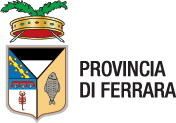Art and culture
Piazza Ariostea
This very special oval piazza set below ground level and also famous for the races of the Palio, is the work of the architect Biagio Rossetti.
Piazza Municipale
Piazza Municipale was once the former court of honour of the Ducal Palace that is dominated by the magnificent Scalone d’Onore (stairway of honour) built by Pietro Benvenuto degli Ordini.
Piazza Trento Trieste
The piazza is the beating heart of the city. It dates back to the Middle Ages and the building of the new cathedral dedicated to St. George around which the seats of religious, civil and lordly power, in the shape of the family who in fact ruled Ferrara, were concentrated.
Porta degli Angeli
The Porta degli Angeli was built in 1526, but was already included in the 15th Century design, at the bottom of Via degli Angeli.
Porta Paola
Porta Paola was designed and built in1612 by Giovan Battista Aleotti and dedicated to Pope Paul V who was pontiff at that time.
Quadrivio degli Angeli
The quadrivium was the name given to the crossroads where Corso Ercole d'Este crosses Corso Porta Mare (to the right) and Corso Biagio Rossetti (to the left).
Spazio Antonioni
This museum brings to light part of the 47,000 items - including documents, films, and much more - that the Ferrara-born director Michelangelo Antonioni donated to his hometown in the mid-1990s
Synagogues
The Jews’ presence in Ferrara dates back at least until the 12th Century and thanks to the religious tolerance of the Este family the community grew, welcoming refugee groups of Ashkenazi from the German Empire territories and later, Sephardic Jews expelled from Spain and Portugal.
Teatro Comunale "Claudio Abbado"
Dedicated to the great conductor, Claudio Abbado, the theatre was built between 1790 and 1797, under the direction of the architects Antonio Foschini and Cosimo Morelli
Temple of San Cristoforo alla Certosa
In 1452, Borso d’Este promoted the construction of a Carthusian monastery away from the core of the city.
The city walls
The ancient Walls of Ferrara encircle the historic centre almost without interruption for nine kilometres, constituting one of the oldest and most impressive...
The Duchesses’ Garden
The Duke’s Garden, also known as “Duchesses’ Garden”, has been organized between 1473 and 1481, after the transformations of Palazzo Ducale, which has been partially rebuilt by the will of Duke Ercole I of Este.
Urban Park G. Bassani
The territory of Barco is located between the city and the river Po. It was one of the Este's game reserves, related to the famous "Delizia di Belfiore", within the walls of the city, and so devoted to the entertainment and amusement of a refined and cultivated court.
Via delle Volte
This charming medieval street marks the axis along which the so-called linear Ferrara developed between the 7th and 9th centuries A.D. and which greatly influenced the further development of the entire city.
Via San Romano
This ancient road was the main link between the market square (currently Piazza Trento e Trieste) and the port, which was situated at the present via Ripagrande.






